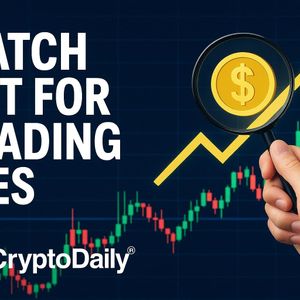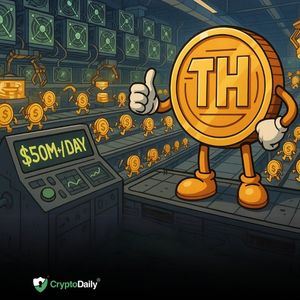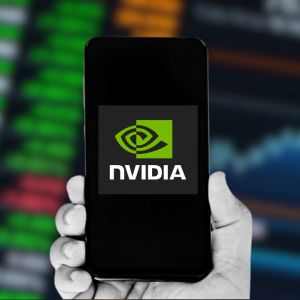With markets surging and 50x leverage back on the menu, retail traders are once again piling into high-risk setups on offshore crypto exchanges offering high leverage. But while everyone’s chasing bigger positions, few are stopping to ask: what are the hidden costs? It’s not just the spread anymore. Between overnight fees, taker commissions, and funding rates that shift by the hour, most traders end up paying far more than they think, especially on volatile pairs. As capital flows back into margin products, a silent tax is draining accounts behind the scenes. The platforms don’t highlight it, but the numbers are real. And if you’re not tracking them, your edge is already gone. Why Leverage Trading Is Surging Again Speculation is back — and traders aren’t just buying the dip, they’re borrowing for it. Over the past 20 days, open interest in Bitcoin futures has jumped by 20% , now topping $26 billion across global markets. That’s not idle money, it’s a signal that traders are ramping up margin exposure to chase near-term moves. Bitcoin’s breakout from a falling wedge pattern has reignited bullish momentum, but the real accelerant is leverage. The estimated leverage ratio has climbed nearly 1%, reflecting a wider shift in appetite for risk. This trend isn’t isolated. Liquidity is tightening around key resistance levels, and traders are stacking bets on both sides, hoping to catch a breakout, but sitting inches from liquidation triggers. As Bitcoin has crossed the $100K barrier, the leverage game is officially back on. The Hidden Cost That Most Traders Miss For many retail traders, leverage is a shortcut to bigger positions — but the real cost isn’t always in the loss column. Every time a leveraged position is opened, there are hidden multipliers baked into the transaction: trading fees, overnight interest, and funding rates that quietly erode capital over time. These aren’t hypothetical costs. They compound. What most traders don’t see is easy to highlight by showing how fees can spiral as leverage ratios climb, even when the position is sized modestly. As outlined by Leverage.Trading, which tracks fees across major crypto leverage trading platforms, these costs can spiral quickly with high-margin positions. For example, on a $500 account using 25x leverage, the trading fee alone can spike from $1 to $25, a 2,400% increase, before the trade even moves. Source: fee breakdown via Leverage.Trading What many traders don’t realize is that this fee structure punishes over-leveraging, not just through liquidations, but through slow, cumulative cost drag. That means even when a trade is “profitable,” the net gain may be smaller than expected due to baked-in operational fees. The message? Leverage isn’t free. And figuring out the true cost structure might be the difference between scaling an edge or burning out your capital. From Spot to Futures - Fees Vary More Than You Think It’s easy to assume that a few decimals in trading fees don’t matter—until they do. Spot trading on Binance charges a flat 0.10% for most users, barely dropping unless you're pushing over $20 million in volume. But jump to the futures market, and the dynamic shifts. Suddenly, even modestly active traders can access taker fees as low as 0.045%—half the spot cost. At the highest VIP levels, that gap grows even wider: 0.017% vs. 0.10%. For day traders or anyone using leverage, that’s not a discount. It’s a structural edge. The table below shows just how sharply the fee curve bends. What looks like a small tweak on paper becomes thousands saved—or lost—depending on where you trade. Binance fee tiers spot vs. futures What this means for you. If you're trading with leverage and not checking the fee structure of your platform, you're probably bleeding capital. Let’s say you open 5 trades per day with a 1:25 leverage ratio on a $1,000 account. At a 0.10% fee (typical spot rate), you're paying $125/month in fees. On Binance Futures at 0.045%, that drops to just $56/month, less than half. Over a year? That’s $828 saved, just by choosing the right market. Why Some Traders Don’t Mind Paying More Fees aren’t always the enemy. Power users often trade in milliseconds, not months. For them, paying 0.05% more means accessing deeper liquidity, faster fills, and better outcomes when volatility hits. As one Reddit user put it: “Much more liquid (perpetual futures liquidity is often much better than spot)… really cheap short term, but quite expensive if held too long.”— CrowdGoesWildWoooo, r/CryptoCurrency Others simply prefer tools that keep up with their strategy: Speed > SavingsScalpers and short-term traders will gladly pay higher taker fees to avoid slippage on a fast-moving market. Seconds can make or break a setup. Reliability WinsAfter flash crashes and liquidity gaps, many traders now prioritize exchanges that stay online when volatility hits. “I don’t need the cheapest platform. I need the one that doesn’t freeze,” as one Redditor put it. Infrastructure & ToolingMore expensive platforms often come with better dashboards, charting tools, and automation features — all of which can increase the trader’s edge. Peace of MindAs one user noted: “I’ll probably only use leverage during key moments in the cycle.” For that, they want a platform they trust, not just one that’s cheap. These are real-world trade-offs that numbers alone can’t capture — and they explain why, even in a fee-sensitive niche like crypto, many traders choose to pay more and sleep better. Final Take: Trading Fees Deserve More Attention in 2025 Leverage trading is back in full force, but most traders still aren’t doing the math. While everyone’s fixated on charts, entries, and liquidation points, the slow bleed of fees continues behind the scenes. It’s not just about losses anymore, it’s about how much you don’t make because of what you didn’t see. In 2025, every basis point matters. Whether you're scalping on Binance Futures or riding swing trades offshore, understanding the cost structure of your trades is no longer optional, it's alpha. So before you size up your next position, ask yourself: are you optimizing for the market... or for the platform’s profit margin? Smart traders calculate both. Disclaimer: This article is provided for informational purposes only. It is not offered or intended to be used as legal, tax, investment, financial, or other advice.



















